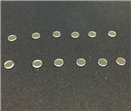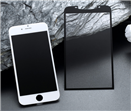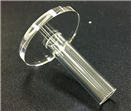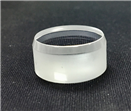

Time:2024-03-08
Speaking of sapphire glass, most people may not be familiar with it in their daily lives. Industrial sapphires are not naturally occurring sapphires, but synthetic ones, with a significant price difference between the two. After all, the cost of artificial synthesis is relatively low, and sapphire in nature is limited. Its chemical composition and physical properties are the same as natural sapphire, mainly composed of alumina, which has physical properties such as chemical corrosion resistance, high temperature resistance, high scratch resistance, and high hardness. It is commonly used in the production of watch mirrors and mobile phone screens in social life. It not only effectively prevents scratches and impacts, but also enhances the charm of the product.

The characteristics of sapphire include:
1. The transmission range is 0.2-5.5 μ m. (200nm to 5500nm), which means that sapphire glass can be exposed to ultraviolet, visible, or near-infrared light
2. Excellent conductivity even at low temperatures
3. Can operate effectively at temperatures up to 2030 degrees Celsius
4. Can withstand acid-base shocks up to 1000 degrees Celsius
5. Can resist the effects of hydration and weathering
6. Has strong corrosion resistance and wear resistance
7. It provides a high level of resistance
The main reason why sapphire glass is often chosen as an optical window material compared to other materials such as silicon dioxide and quartz is its physical properties. The strength of sapphire allows for the manufacture of sapphire windows with strict tolerances and thickness, thereby meeting the high-precision optical requirements of various industries. This hardness means that sapphire windows have strong wear and scratch resistance, regardless of how potentially destructive their usage environment may be. Due to its characteristics, sapphire windows are commonly used in harsh environments involving high temperatures, high pressures, or the presence of corrosive substances.






Tel
Mobile phone
Customer service
TOP